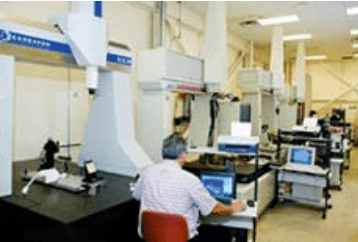November 2005 Vol. 135 No. 5
Manufacturing ENGINEERING
TECT (Turbine Engine Components Technologies) Corp.; (Thomasville, GA) stood when informed of pending changes in the operating format of the control software package they had been using for years. In the CMM inspection area, the extensive programming required using the old system had already become a huge problem. Instead of trying to go through a complete new learning curve for an older system that was already cumbersome, it was time to start looking for something new and easy to learn. “The goal was to find a software package that could handle all CMM programming needs off-line or on-line, for diverse machines, and do it at minimal cost with a short learning curve,” explains Bill Hopkins, senior CMM manager at TECT.

TECT is a privately held company, with multiple divisions involved in the custom manufacturing of semifinished and finished components and assemblies for aerospace, power generation, rail, off-highway, automotive, and other industries. The Thomasville division manufactures fan and compressor blades and vanes for most of the major jet engine manufacturers, commercial and military.
They operate with a commitment to statistical process control (SPC), aimed at maintaining part-to-part consistency within a chosen optimum process capability. Statistical profiles are performed for various product characteristics exhibited over time using inspection equipment ranging from simple hard-point gages to computer-based gages and CMMs.
TECT runs a three-shift operation with multiple lines in operation at all times, including all final test, measurement, and inspection, which is critical to all parts. Time is at a premium, and excess time in machine programming equates to money lost.
There were two main reasons to start looking for new CMM programming software. “First,” says Hopkins, “because the package being used was going to be radically changed, it was the perfect time to research the market. Also, with new projects coming on board, more exotic configurations with even tighter specifications would be required for final inspection. Software was needed that could program the CMMs for these products.” Because an upgrade would be potentially complicated, time consuming, and expensive, TECT considered that they had an opportunity to see if a program could be found that would handle the new requirements with less downtime for installation and training.
TECT uses CMMs with a variety of probe technologies on the production floor for final inspection. With
the current software, two engineers were dedicated to programming the CMM area, and a third was being
hired because the workload had gotten so heavy. Within one new project alone, there were seven part
numbers in the part family that looked alike, and yet were dimensionally different. A CMM program had to
be developed for each part number for final inspection.
Aside from this new project, the plant still ran large lots of parts. “But even there,” Hopkins points out, “the
way we approached production was changing. Formerly, a substantial amount of customized gaging tools
were purchased from outside sources and used by operators to measure parts. The movement is now
more heavily toward only using CMMs for the task.”
This change reduces cost, as investing in the custom gaging was very expensive, and the gages also had
to be maintained. The ideal situation was to be able to generate programs on the CMMs to handle all part
measurement, regardless of the customization required. For these reasons, a streamlined CMM
programming area had the potential to save a lot of money in various areas, not just final inspection.
Labor hours, time to create programs, time to measure parts, and financial investment in production
gaging would all benefit.
Quotes were obtained from every likely supplier and comparisons were made; the candidate list was long.
The final decision resulted in the selection of a CAD-based product called CMM-Manager from Integrated
Quality Inc. (Lewis Center, OH). This company developed some of the programs that were included in the
old software package that TECT was switching from, which was how their name got onto the initial
contact list.
The major factors for the purchase of this software program were initial cost of the software, short
learning curve, and fast ROI. The benefits were programming that could integrate with any type of
machine without the need for special adaptation software or hardware, and the fact that the software did
exactly what was needed. There was no overkill.
Programming that previously took 100 hr can now be done in less than 40.
The new software handles all needs in one package. Off-line programming saves time by allowing part inspection programming without tying up machines on the shop floor. While on-line programming is still
needed in some cases for some machines, particularly when part models aren’t available, the program is
easier to learn than the previous software. After three days of training, TECT engineers had written new
programming that previously took two and a half weeks to write for the CMM area.
The software also creates travelers for all the parts for traceability. The CMM report was included with the
part, and the software also provided an electronic copy of the report. “Another very nice feature is that if
anyone in virtually any location needed to retrieve or review any report, it’s viewable using an Internet
web browser,” says Hopkins. Graphical reports generated by the program are easy to use and
informative. Previously, many of the graphical reports generated using the older program required a good
deal of deciphering. Technical resources were constantly required to develop ways to try to identify
exactly what characteristics were being measured, and where they were on the part. The software
indicates exactly where the characteristic originated, the tolerances, and any deviations-all in one picture.
Today, writing new programs that used to take months take only weeks. Ten CMMs can be programmed
offline quickly to measure and analyze all products requirements, including point cloud areas that were
not possible using the previous software.
